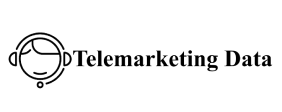A well-maintained email list is a valuable asset for any business. It provides a direct channel to communicate with potential and current customers, build relationships, and drive sales. However, managing an email list requires careful attention to ensure its effectiveness.
The Importance of Email List Management
- Improved Deliverability: Proper list management helps prevent emails from landing in spam folders, ensuring they reach your intended recipients.
- Enhanced Engagement: A clean and segmented list allows you to send more targeted and relevant messages, increasing engagement rates.
- Better ROI: A well-managed list can lead to Slovenia Phone Number higher conversion rates and a better return on investment (ROI).
- Enhanced Brand Reputation: Consistent and valuable email communication can strengthen your brand’s reputation.
Key Components of Effective Email List Management
-
List Hygiene:
- Regular Cleaning: Remove inactive, bounced, or invalid email addresses to maintain a clean list.
- Hard and Soft Bounces: Handle hard and soft bounces appropriately to prevent deliverability issues.
- Unsubscribe Management: Respect unsubscribe requests promptly to avoid legal issues.
-
Segmentation:
- Targeted Messages: Divide your list into segments based on demographics, interests, or behavior to send more relevant content.
- Personalized Content: Tailor messages to individual preferences to increase engagement.
-
Data Privacy and Compliance:
- GDPR and CCPA: Ensure your email Europe Cell Phone Number Example marketing practices comply with data privacy regulations like GDPR and CCPA.
- Consent Management: Obtain clear and explicit consent from subscribers.
-
Email Deliverability:
- Authentication: Use authentication protocols like SPF, DKIM, and DMARC to improve deliverability.
- Content Quality: Avoid spammy practices and focus on providing valuable content.
- Monitoring: Keep an eye on deliverability rates and address any issues promptly.
-
Engagement Metrics:
- Tracking Key Metrics: Monitor metrics BHB Directory like open rates, click-through rates, conversion rates, and unsubscribe rates.
- A/B Testing: Experiment with different subject lines, content, and send times to optimize engagement.
-
Automation:
- Workflows: Use automation tools to streamline tasks like sending welcome emails, follow-ups, and abandoned cart reminders.
- Segmentation: Automate segmentation based on subscriber behavior or preferences.
Best Practices for Email List Management
- Consistent Communication: Maintain a regular cadence of emails to keep your subscribers engaged.
- Provide Value: Offer content that is relevant and valuable to your audience.
- Optimize for Mobile: Ensure your emails are mobile-friendly.
- Use a Double Opt-in: Require subscribers to confirm their email address to prevent spam.
- Avoid Spam Triggers: Be mindful of words and phrases that can trigger spam filters.
Tools for Email List Management
- Email Marketing Platforms: Platforms like Mailchimp, HubSpot, and Constant Contact offer features for list management, email creation, and analytics.
- CRM Software: A CRM system can help manage contacts, track interactions, and segment your list.
- Email Deliverability Services: Tools like SendGrid and Mailgun can monitor deliverability and provide insights.
By following these guidelines and utilizing effective tools, you can effectively manage your email list and maximize its potential to drive sales and build strong relationships with your audience.


